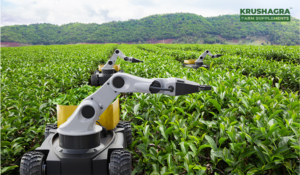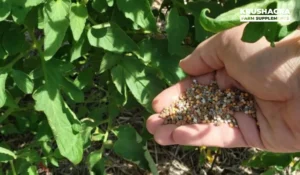Biopesticides are pesticides that are produced using natural resources like plants, microbes, and certain minerals. Biopesticides, in contrast to traditional chemical pesticides, target specific pests while causing the least amount of harm to non-target creatures and the environment using a variety of mechanisms including toxicity, repellence, and growth regulation. Due to their crucial contributions to environmental sustainability, decreased chemical exposure, targeted pest control, management of resistance, integrated pest management (IPM), and meeting consumer preferences, biopesticides are of highest importance in contemporary agriculture.
The Role of Biopesticides in Agriculture
By providing environmentally friendly pest control methods, biopesticides are essential in modern agriculture. By reducing harm to non-target creatures, their use decreases chemical exposure, encourages environmental preservation, and supports biodiversity conservation. Biopesticides also assist in managing resistance because they offer alternate modes of action that postpone the emergence of pest resistance.
Farmers can efficiently control pests while reducing their dependency on chemical pesticides by incorporating biopesticides into integrated pest management (IPM) systems. In line with the concepts of environmentally benign and sustainable methods, biopesticides are also crucial in organic farming. Additionally, the growing market demand for food that has been produced responsibly fuels the significance of biopesticides because they satisfy consumer expectations and enhance crop access to markets. Utilizing biopesticides encourages research and development activities, which results in improvements in efficacy, specificity, and application techniques. In general, biopesticides help agriculture become more ecologically friendly and sustainable.
How to use biopesticides for arthropod control of cereal crops
This guide aims to provide farmers and agricultural professionals with essential information on using biopesticides for effective arthropod control in cereal crops. Using biopesticides for effective arthropod control involves several important steps. Here is a general guide on how to use biopesticides in your pest management program:
- Determine the Target Pest Arthropods: Find out which specific arthropod pests are harming your cereal crops. Understand the life cycle, behavior, and preferred eating patterns of the pest species. Using this knowledge will enable you to select the best biopesticide for control.
- Choose the Right Biopesticide: Opt for a biopesticide that has a track record of success against the pests you want to control. Take into account elements including the pests that need to be controlled, the crop being treated, and any particular guidelines or suggestions offered by the biopesticide producer. Make sure the biopesticide is appropriate for the usage for which it is intended by carefully reading the label and product information.
- Observe the application guidelines: For the right handling, blending, and application of the biopesticide, according to the manufacturer’s instructions. Follow the suggested rates, timing, and application techniques. This can entail spraying the biopesticide at the recommended growth stage of the crop or pest life cycle, using the right tools (such sprayers), and diluting it with water.
- Consider Weather Conditions: When using biopesticides, consider the weather. The efficiency of biopesticides and their propensity for drift can be influenced by temperature, humidity, and wind speed. Pick a period when the weather is ideal for bringing about the desired control.
- Monitor Pest Populations: Keep an eye out for pests to assess whether biopesticide application is necessary. Take into consideration financial or operational thresholds that signal when insect numbers have gotten to the point where action is required. You can make well-informed decisions about the timing and frequency of applying biopesticides thanks to monitoring.
- Integrate with Other Pest Management Strategies: Biopesticides perform at their best when used in conjunction with other pest management techniques. To increase the efficiency of biopesticides, combine biological controls like natural enemies with cultural methods like crop rotation and planting resistant types. A more thorough and sustainable pest management program is made possible by this integrated approach.
- Evaluate and Modify: Monitor pest populations and measure crop damage to determine the efficacy of the biopesticide application. Keep track of the dates you applied, the rates you utilized, and the outcomes you saw. With this knowledge, you can make adjustments as necessary and make future pest management decisions.
- Safety Precautions: Take all necessary safety measures when using and handling biopesticides. Put on the specified personal protective equipment (PPE) from the manufacturer. Biopesticides should be kept safely out of the hands of kids, pets, and livestock. Use appropriate disposal methods for containers and unused items in accordance with local laws.
Conclusion
Biopesticides play a vital role in agriculture by providing sustainable pest management, reducing chemical exposure, preserving the environment, managing resistance, supporting integrated pest management, promoting organic farming practices, meeting market demands, and driving research and development. Their use contributes to a more sustainable and environmentally friendly approach to crop protection.
In conclusion, it is impossible to overestimate the significance of biopesticides in contemporary agriculture. By adhering to these recommendations, you can efficiently use biopesticides for controlling aphids in your cereal crops while reducing your environmental impact and encouraging sustainable pest management techniques.





